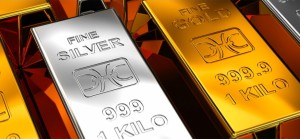The Silver Shortage Myth
Summary
- The Silver Shortage story dates back to 1998.
- The retail shortage is a logistic problem and not a physical problem.
- Sales of Silver coins don’t matter.
- To get truly bullish I want to see low sales, not high.
The Silver Shortage Myth
Recently, I read an article about how a “Silver Shortage” has been confirmed. As someone who actually worked in this business, and carried out orders in the physical market, I have to say this story is complete bogus.
First off, it claims that Johnson and Matthey and Royal Canadian Mint have run out of 100 ounce bars. I went to Johnson and Matthey’s website, also known as JM Bullion, and found that you could purchase 100 ounce Royal Canadian Mint and Johnson Matthey bars in as many lots as you like. Obviously there is no shortage there. This means they already have stated inaccurate information.
But when it comes to silver being in a shortage, this story isn’t new.
Brief History of Silver Shortage Stories
The roots of this shortage story date back to 1998, when analysts were claiming that silver would enter a permanent shortage. Obviously, this did not happen.
But in 2010, the shortage story was rehashed and claimed that Perth Mint, the US mint, and other mints were rationing sales. Now when it comes to sales, they can be rationed for many reasons, it might be the mints don’t have enough workers, transportation costs, or other logistical problems. There could also be new coin designs that are going to be released, new dye being used, and as a result, they just don’t want to make any more coins or bars of that nature, and would rather start focusing on new product. Rationing sales doesn’t automatically mean there is a shortage of silver. Especially, when dealing with retail products.
The silver shortage story resurfaced again in 2013. Here they claimed that Apple (NASDAQ:AAPL) had trouble supply itself with enough silver to maintain production of product. If you want to believe that, then go ahead, but this story has already been debunked. I also want to bring up, that since this story surfaced, the price of silver declined by 36 percent in 2013, and declined again 2014. If there ever was a shortage of this magnitude, the price wouldn’t have declined.
This brings us to the current story, wholesalers running out of metal. If this were even remotely true, then why is APMEX currently offering a sale for 35% off premiums for all products, and JM Bullion is also offering a sale for Philharmonics (a widely held and popular coin) this week. If there was a shortage, two of the largest dealers in the nation would not be offering sales, in fact they would be selling at a premium, considering the fact that it is so hard to find.
The truth is, that anytime there are high premiums, or slow delivery times, some companies claim there is a “shortage.” It’s an easy way to explain why delivery times are taking so long, or premiums are so high. The truth is, that isn’t the reason, and I am going to attempt to show you why.
How The Business works
Now I am going to try and explain to you the process of getting the metal to you, and why high premiums, and inventory depletions occur regularly, or on large price declines. In 2008, $2 to $3 dollar over spot premiums became the norm for a short period of time. Generally that wouldn’t be a large premium, but the price of silver was roughly $10 dollars an ounce, so that equates to a 20-30 percent premium. That sounds like a lot, but you have to look at it from a business prospective. If you were a dealer, and the price of silver was $10 dollars an ounce, generally you would make 3-5% on Silver product sales, and at 10 dollars an ounce, you would only make roughly 30 cents in profit for every coin or bar sold. That is a small sales profit, especially when rent, salaries, transportation, and other business costs haven’t declined in correlation with the price of silver. When you’re only making 35 cents a coin or bar, you can quickly go out of business, considering the fact that current costs are still rising. During times of large price declines, a company will have to generate a larger profit than normal, due to the low price. That is one reason premiums rise substantially while the price declines; but its not the main reason.
High premiums can also be part of the logistics process. But before you understand why, you must first know how it works. First, the miners sell the metal to the refiners, who then refine the metal into planks. Then the refiners sell those planks to the mints, who then mint those planks into coin or bar form. From there, the mints sell the coins and bars directly to the wholesalers, who then sell their coins and bars to the retailer dealers. So judging from this process, it’s quite obvious that the retail dealers don’t buy their product at spot price, and that this logistical process can be quite expensive.
Due to this costly process, companies estimate sales on a monthly basis, and make an order based upon these estimates for the month. If the silver price declines rapidly, sales always increase rapidly. This clears out inventory very quickly, so as a result, one will more than likely experience a delayed delivery time depending on when they made the purchase. Also as stated above, the logistics process is very costly, if companies run out of inventory, this logistics process, has a much larger influence the premium you pay, then it would normally have.
Now the question remains, why once a month. This is really simple; when a dealer buys 100 silver eagle coins to sell, what they immediately do after they purchase these coins for sale, is go out onto the market and buy puts on silver contracts or ETFs as a means of hedging, thus allowing them to lock in their over spot premium. If they order too much inventory, they could potentially be holding onto an expiring put, which then leaves them at the mercy of the market due to the fact that they weren’t able to sell enough metal within that expiring option timeframe. This could end up costing the company a lot of money if the market goes south. In the bullion business, they always say, better to have little of an inventory, then too much.
This is why a lot of companies run out of inventory during rapid price movements. Rapid price movements, rather they be an increase in price or decrease in price, always attract new buyers, and as a result, companies experience a higher sales volume than what they are normally accustomed to.
Conclusion
I hope you better understand why mints, wholesalers, and retail dealers quickly run out of product. It’s just the nature of the business. But in this conclusion, I wanted to bring up my last point, and that is why would anyone ever think that sales of silver eagles or maple leafs would move the market. It’s been well known that heavy involvement from the retail investor is generally a sign of a market top. Peter Lynch even said in his book, One up on Wall Street, “When the neighbors tell me what to buy and I wish I had taken their advice, it’s a sure sign that the market has reached a top,” P. 88. This is a nice way of Peter saying involvement from the retail investor is a sign of a market top not bottom, and precious metals isn’t any different. If anything, large sales of retail products are probably more likely to be a sign of a market top, and not a market bottom. Remember, coins and small bars are retail products. If you want a true measure of demand, look to 1,000 ounce silver bars.
Personally, as a contrarian, I would be more bullish on silver if I were reading stories about record low sales when it comes to coins, rather than reading stories about record high sales. I personally think now is a good time to purchase silver due to the fact that it’s unloved, cheap, and ignored by the street; combined with the fact that there are structural problems in the US economy that will eventually lead to the Fed engaging in more monetary stimulus in the future. But the shortage story has been around for years, and will not be a catalyst for the price of silver.






